
Climbing History
From Ancient Times to Modern Adventures
200,000 years of human connection to these magnificent mountains

200,000 years of human connection to these magnificent mountains
The mountains of Wadi Rum have witnessed human presence for over 200,000 years. From prehistoric hunters to Nabataean traders, from Bedouin shepherds to modern climbers, these sandstone giants have been climbed, revered, and explored across millennia.
While modern rock climbing only arrived in 1984, the story of ascending these peaks stretches back through countless generations, each leaving their mark on the landscape and its traditions.
A journey through time in Wadi Rum
The earliest known human presence in Wadi Rum. Prehistoric peoples lived among these mountains, likely ascending lower canyons and possibly some summits during hunting expeditions.
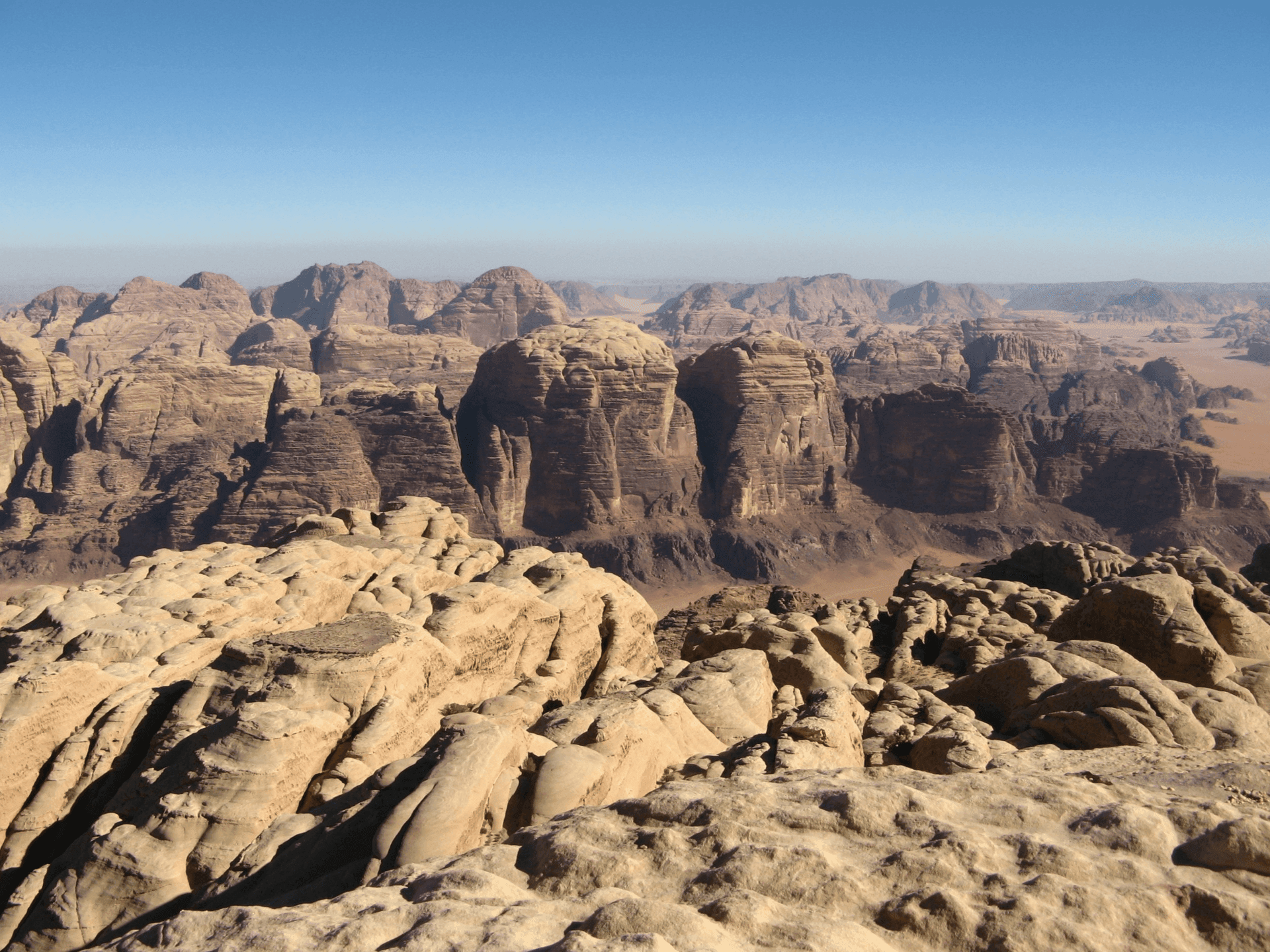
The mountains witnessed humanity's earliest footsteps, long before recorded history began.
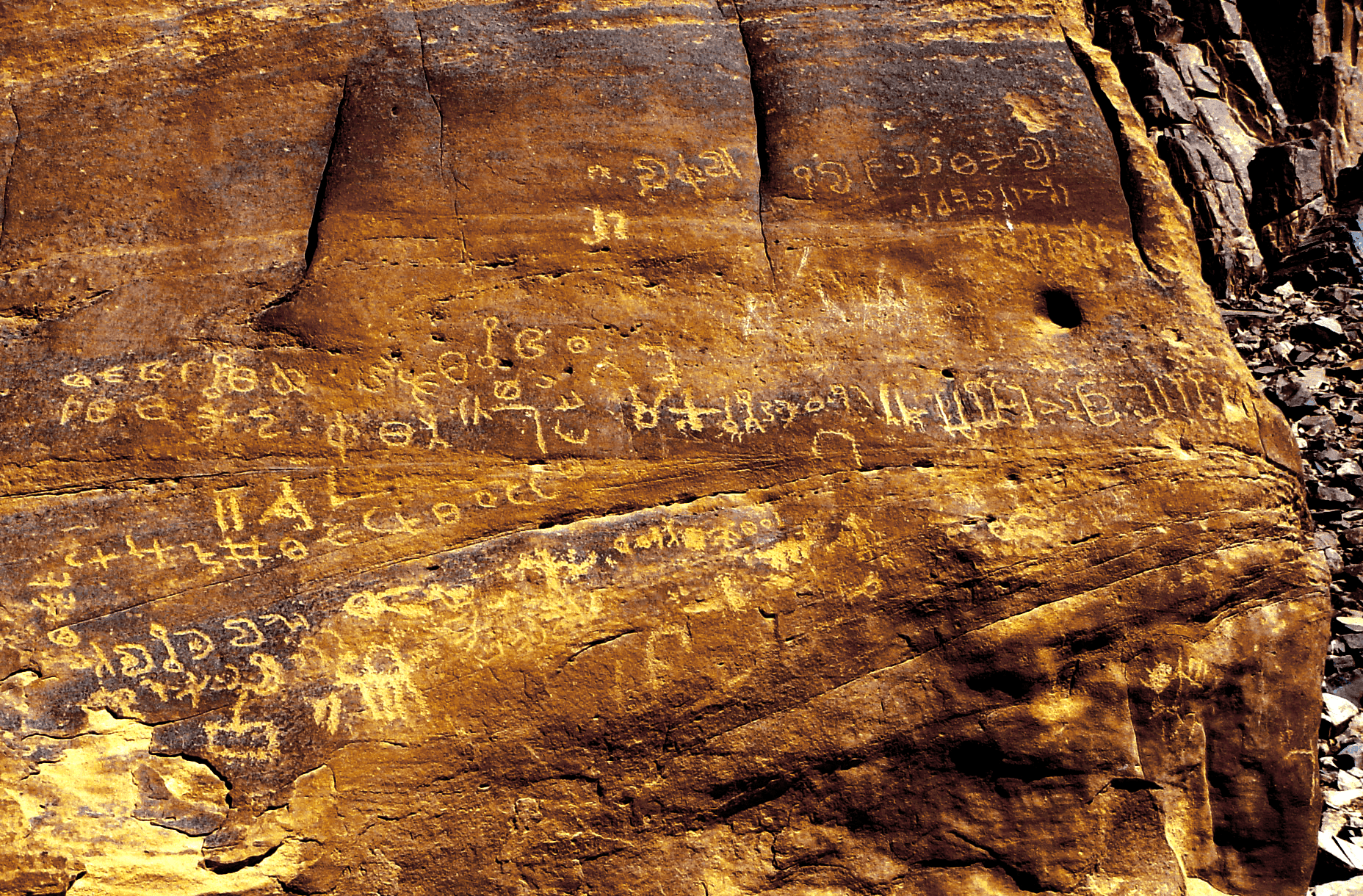
The Nabataeans carved water channels, built dams, and created inscriptions that still mark the cliffs today.
The Nabataeans and Thamuds inhabited Wadi Rum, ascending canyons and possibly summits. They left behind remarkable engineering works including rock-hewn steps, water channels, dams, and countless inscriptions throughout the area.
For countless generations, the Bedouin people have known routes to the summits of these mountains. They developed traditional climbing techniques, carved small handholds, and built "Bedouin steps" (stone cairns) to pass difficult sections during hunting trips.
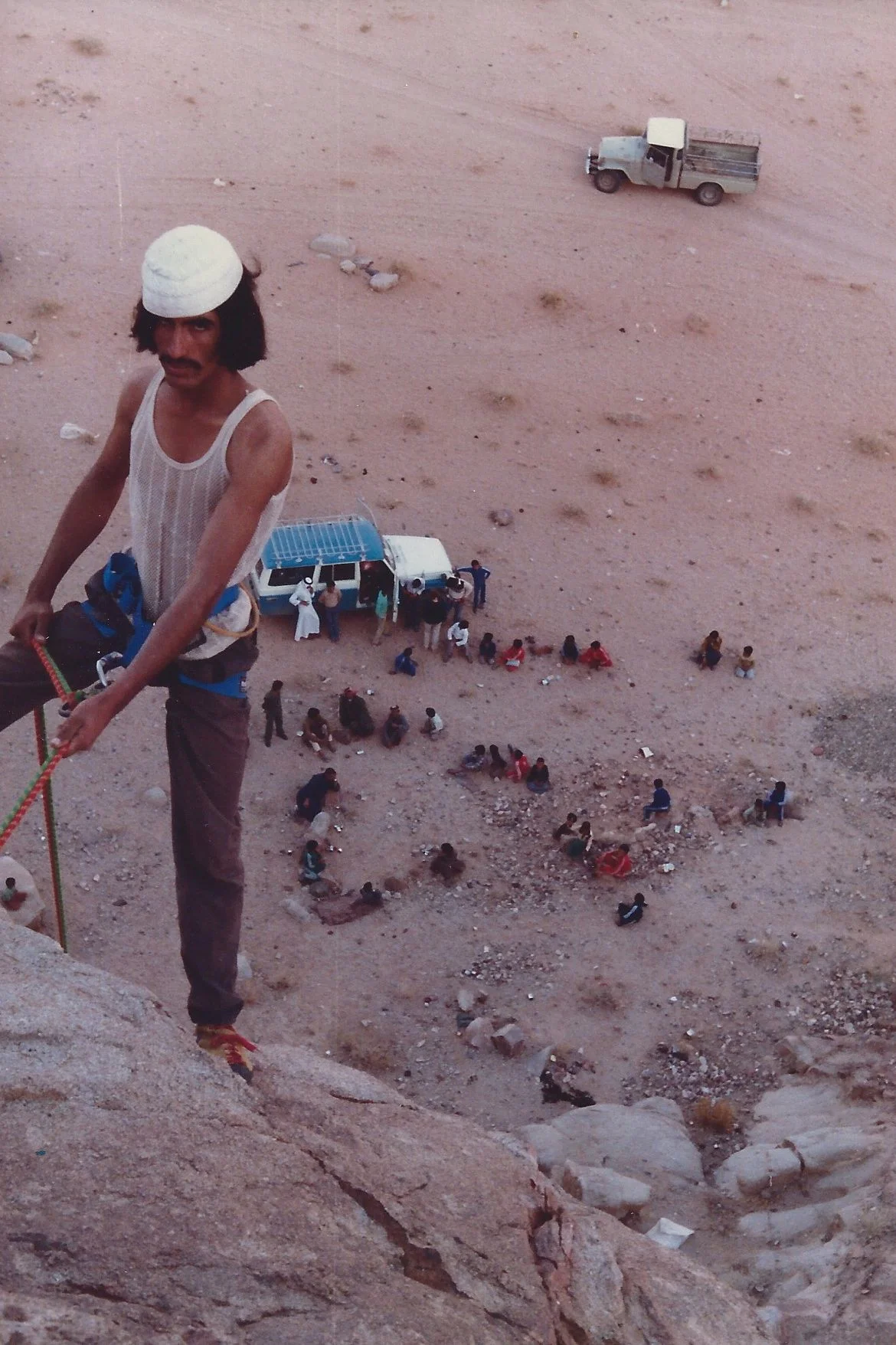
The Howeitat tribe, descendants of the Nabataeans, maintained deep knowledge of every peak and passage.

Bedouin guides led survey parties to create the first accurate maps of the region.
Bedouin guides led survey parties to the summits of several peaks, including Jebel Rum, to assist in creating the first detailed maps of the area. This marked the beginning of documented ascents in the region.
Charmian Longstaff and Sylvia Branford made the first recorded ascent of Jebel Rum by Western climbers, guided by Sheikh Hamdan-the same Bedouin guide who had led the earlier mapping expeditions to the summit.
Read the full story →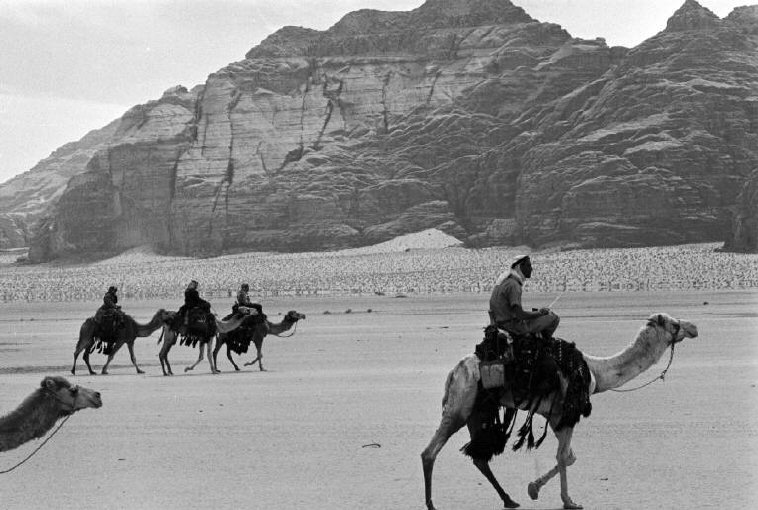
Sheikh Hamdan's route remains a classic climb, bridging traditional and modern climbing eras.
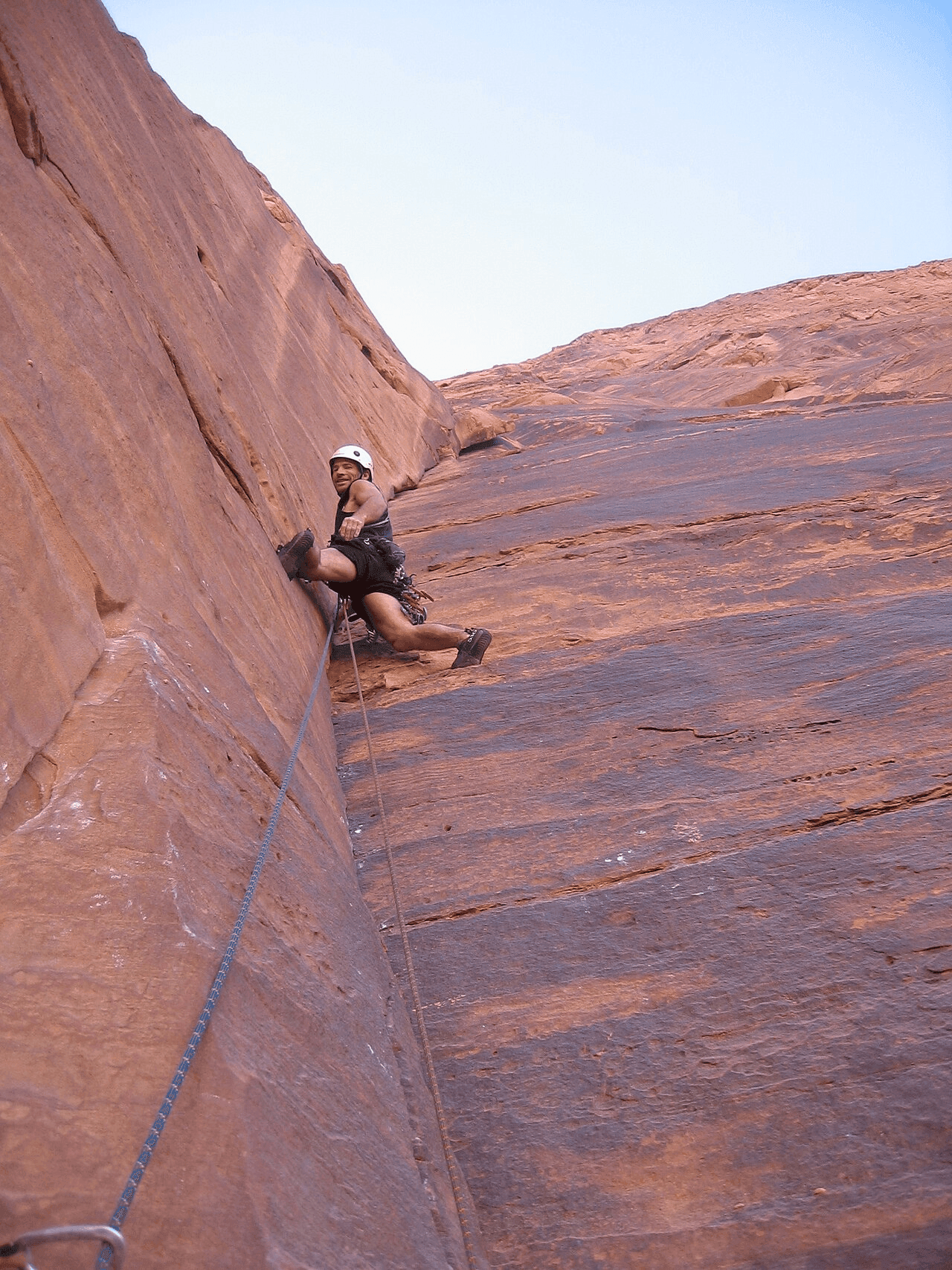
"The first climbing expedition" opened Wadi Rum to the international climbing community.
The first modern climbing expedition arrived in Wadi Rum. Members were Tony Howard, Di Taylor, Alan Baker and Mick Shaw, marking the beginning of documented climbing in the region. This pioneering group discovered a climbing paradise virtually untouched by the international climbing community. At that time, Wadi Rum was more of a Bedouin encampment than a village, accessed by a pot-holed single track road. The Rest House was an empty shell, and there was no electricity in the village.
At that time, Wadi Rum was more of a Bedouin encampment than a village, accessed by a pot-holed single track road. The Rest House was an empty shell, and there was no electricity in the village.
International climbers began establishing hundreds of new routes across the massifs. French, British, and other European climbers documented climbs of all grades, from easy scrambles to technical big walls. The first climbing guidebooks were published, putting Wadi Rum on the world climbing map.
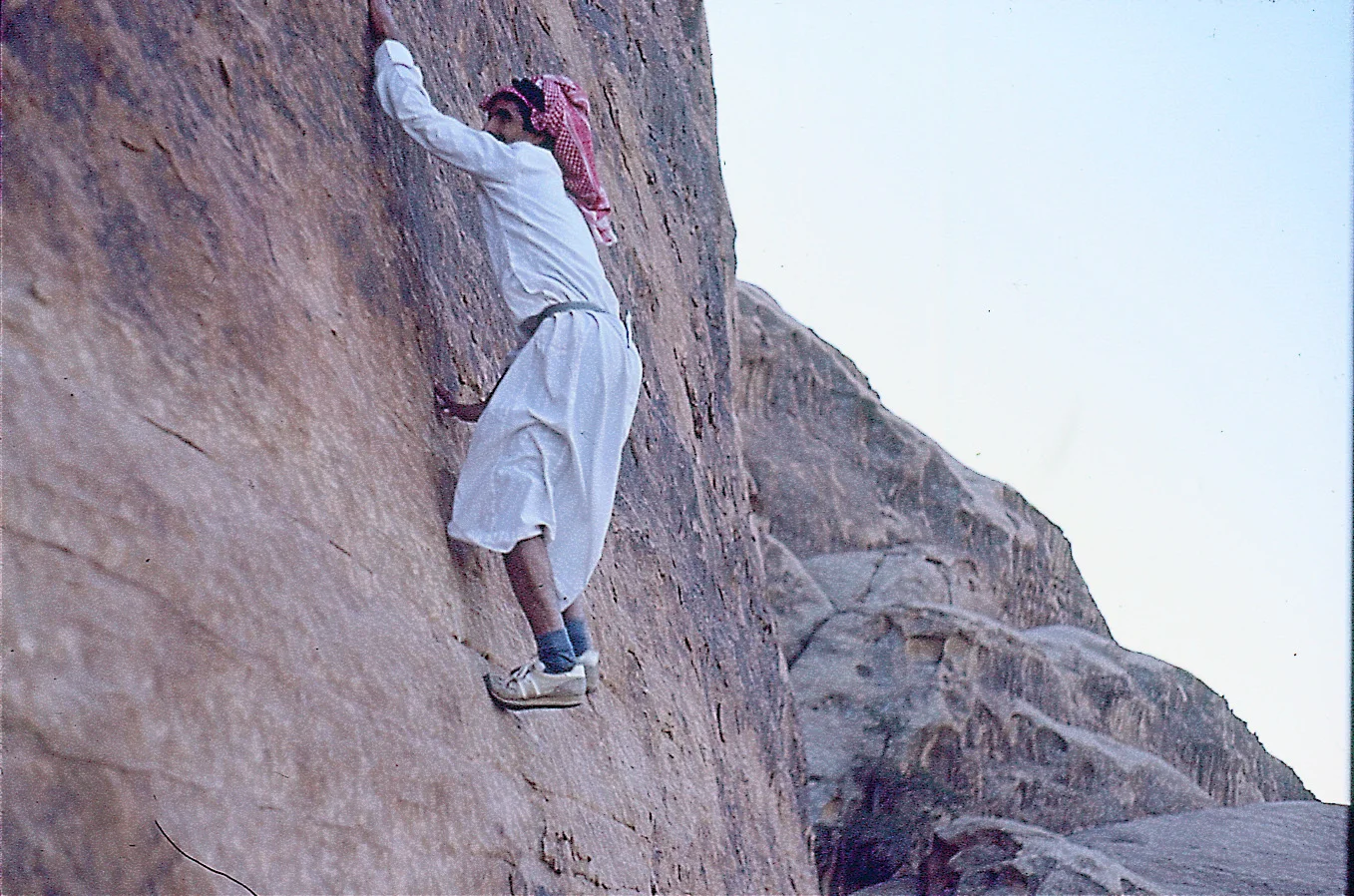
Climbers documented their routes in a logbook at the Rest House, creating a living history of exploration.
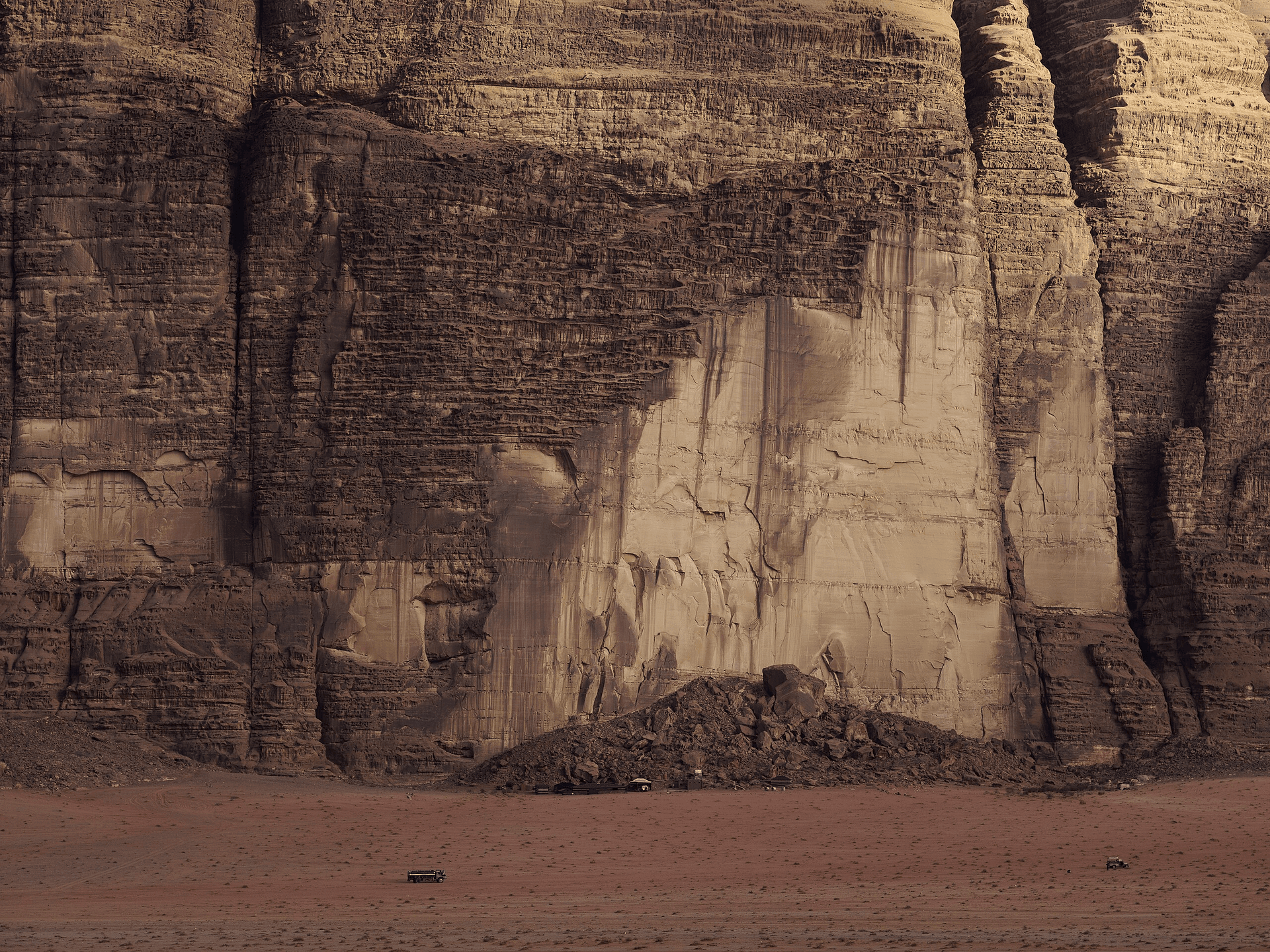
Wadi Rum is now recognized as one of the world's premier desert climbing destinations.
Today, Wadi Rum attracts climbers from around the globe. Local Bedouin guides, many certified by international mountain guide associations like ENSA, combine ancestral knowledge with modern safety standards.
The tradition continues: climbers still document new routes, the mountains still hold countless unclimbed lines, and the Bedouin people remain the guardians and guides of these ancient peaks.
The climbing traditions of Wadi Rum continue to evolve while honoring the past
Thamudic and Nabataean inscriptions, rock drawings, and carved steps mark the cliffs throughout Wadi Rum, connecting modern climbers to ancient peoples who also explored these heights.
Traditional Bedouin routes and climbing techniques, passed down through generations, are still used today. Small carved handholds and stone cairns guide climbers on classic ascents.
Today's Bedouin guides combine ancestral knowledge with international certifications, ensuring climbers experience authentic local expertise with world-class safety standards.
"Countless routes of all grades await the climber, and the area should continue to provide mountain adventures far into the future."
Historical content and route descriptions on this site are sourced from "Treks and Climbs in Wadi Rum, Jordan" by Tony Howard, used with permission from the author.
Tony Howard's pioneering work in documenting Wadi Rum's climbing routes has been instrumental in establishing this region as a world-class climbing destination. His guidebook remains the definitive reference for climbers visiting Wadi Rum.
Join the long tradition of climbers who have explored these magnificent mountains. Climb with local Bedouin guides who carry forward centuries of knowledge.